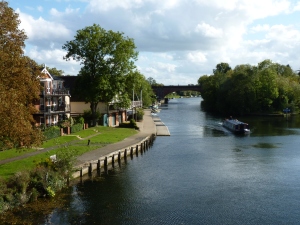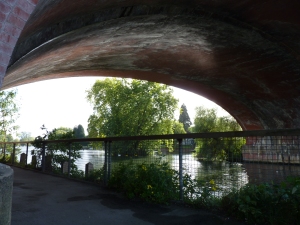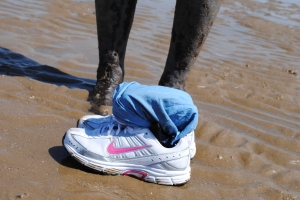Since I watched Sadler’s Wells’ incredible pop-up show, Electric Hotel, last summer I have been preoccupied with the place of headphones in site-specific performance.
So, do they have a place in live performance?
In Electric Hotel they certainly did. Composers Ben and Max Ringham used impeccable sound design/music to focus our attention in a piece that, with many storylines occurring on the multiple layered stage, would have otherwise bewildered me.

Electric Hotel, Kings Cross July 2010, photo: Carly Lake
The headphones catalysed an unusual community experience, one that was simultaneously shared whilst remaining isolated. Which aided the atmosphere without being an uncomfortable “Silent Disco” scenario. And it meant we could lose ourselves in the performance despite being on a derelict area in Kings Cross, somewhere that would normally be full of noise pollution. I liked it a lot.
If it tours near you: Just go. I hear it was successfully reconstructed at Latitude this month, which is great news.
My next headphone-based observation is in Audio Walks. In theory I love the concept but in reality I’m yet to hear one that has enhanced my experience of an area.
My last headphone journey was the accompaniment to July’s Punchdrunk Enrichment collaboration with Arcola’s 50+ Theatre Group. The show itself was a community response to Dicken’s The Uncommercial Traveller, a collection of one-on-one experiences in a Victorian soup kitchen, sourced by Hackney Council’s Art in Empty Spaces initiative. The acting was great, the design, fantastic. A beautiful project, I completely forgot it was community theatre. I went with my friend Christine (check out her brilliant blog
on theatre audiences) and after sharing our experiences afterwards I came over with major theatre envy and wanted to go back and meet some of the other characters, if only it hadn’t been sold out!
But the optional Audio Walk was a disappointment. It started at Hackney Town Hall and lasted almost an hour, ending at the venue. I had hoped we would be aurally transported back to yesteryear to reimagine the East End in all its Dickensian glory but instead I was assaulted with a lot of traffic noise (it opened AND closed the piece), which I could have heard without the headphones, and some music I found mildly irritating. There were some Dickens readings on the download, so it should have been a good introduction to the piece and I thoroughly enjoyed wandering around Hackney, but for some unfathomable reason, I just did not like the audio walk.
Don’t get me wrong, I am normally a fan of Stephen Dobbie’s sound design for Punchdrunk, the man knows how to create a sonic atmosphere, but as with the curse of the audio walk: It just didn’t live up to my expectations.
If anyone out there can direct me to any audio walks, good or bad, I will gladly take a hike and report back. And if any readers want to experience one for themselves, then do try Subtlemob\’s Soho based embryonic experiment with the style.











